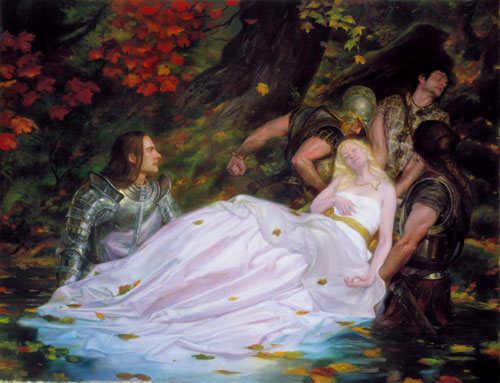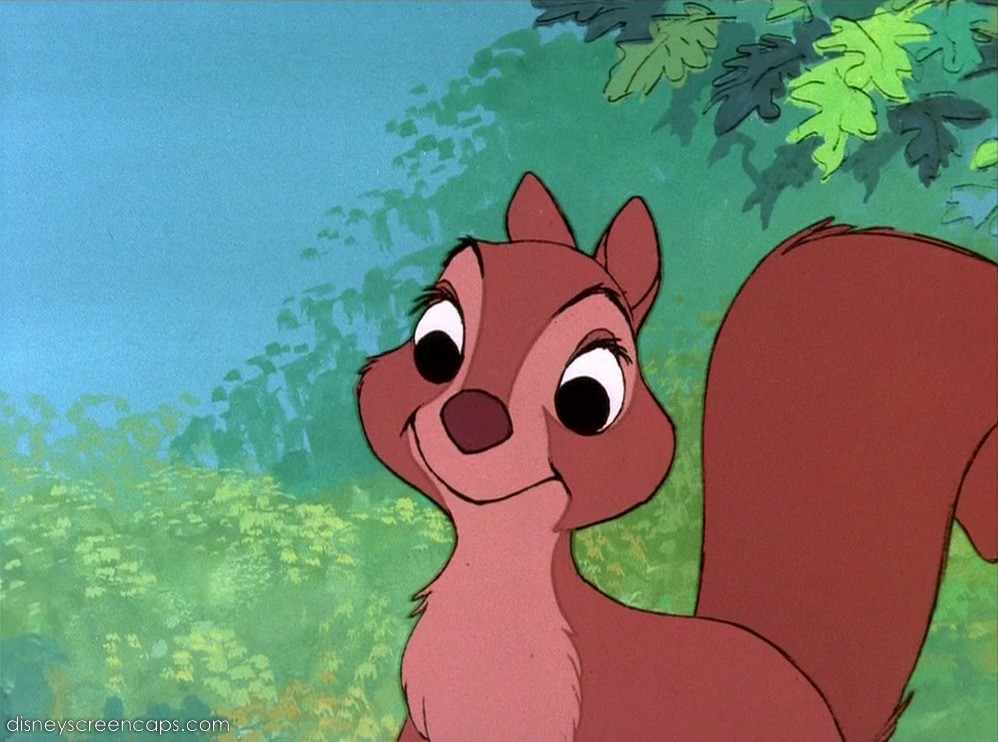First of all, Tennyson's writing is beautiful...so melancholy. There was one line that especially caught me eye from The Idylls of the King (around line 125):
"Thou wouldst betray me for the precious hilt;
Either from lust of gold, or like a girl
Valuing the giddy pleasure of the eyes"
 |
| In other words, Arthur is displeased with Sir Bedivere, so he's calling names. (I'm not sure if I'd be much better if my head was split.) |
Here is another section describing the appearance of Arthur's beloved sword (around line 51):
"There drew he forth the brand Excalibur,
And o'er him, drawing it, the winter moon,
Brightening the skirts of a long cloud, ran forth
And sparkled keen with frost against the hilt:
For all the haft twinkled with diamond sparks,
Myriads of topaz-lights, and jacinth-work
Of subtlest jewellery. He gazed so long
That both his eyes were dazzled as he stood..."
As you can see, Excalibur is described as being bright like a star, leaving Bedivere in awe as a girl would be from seeing something pleasurable. (You know how us silly girls are...)

Let's look at a girl he may have parallelism with in The Lady of Shalott:
This is how The Lady of Shalott sees Lancelot. She is as much as in awe of Lancelot as Bedivere is in seeing Excalibur. But is it Excalibur himself (yes...I wrote like Tennyson!) that has Bedivere in awe, or is it what the sword is symbolizing: King Arthur, The Round Table, and Camelot? Most importantly, King Arthur and his rein. In seeing Escalibur shine bright like a diamond (lol), Bedivere is filled with nostalgia of once was as The Lady of Shalott is filled with a similar emotion upon seeing Lancelot. This, of course, introduces the question on whether one can feel nostalgia for something he or she has never experienced?
The bridle bells rang merrily 85Beside remote Shalott. 90As he rode down to Camelot. 95His broad clear brow in sunlight glow'd; 100From underneath his helmet flow'd"
 |
| Unless you just have a really bad memory like this character. |
In seeing the beautiful, curly haired Lancelot, The Lady is filled with the sorrow of what could have been: a life of love, passion, and glory, possibly with him. When Bedivere feels sorrow at the idea of the end of the Round Table, it is because these knights have experienced love, passion, and glory together. While Bedivere may realize that throwing Excalibur in the lake will bring on the death of Arthur, The Lady of Shalott realizes that Lancelot may bring upon the death of herself.
 |
| "She has a lovely face." |
Well that was philosophical. I feel like Cicero. Have a fantastic weekend, everyone!






+smart+stuff+wall.jpg)